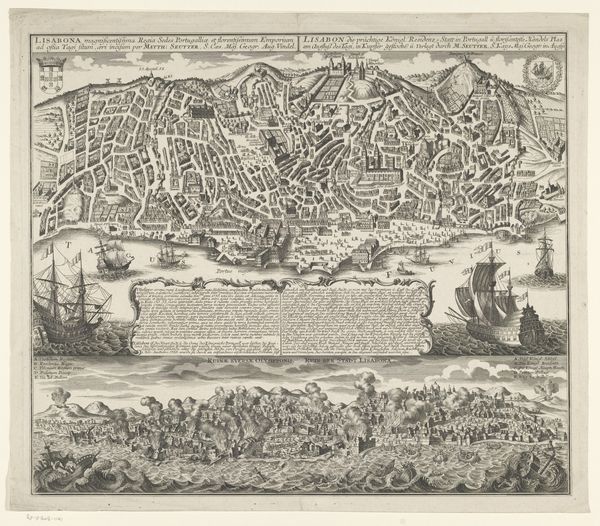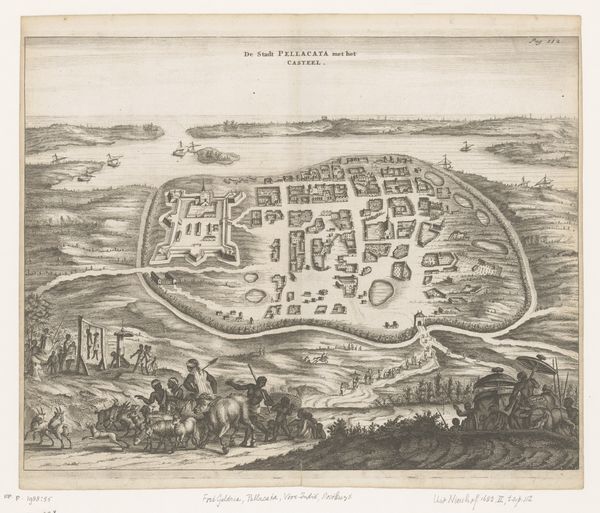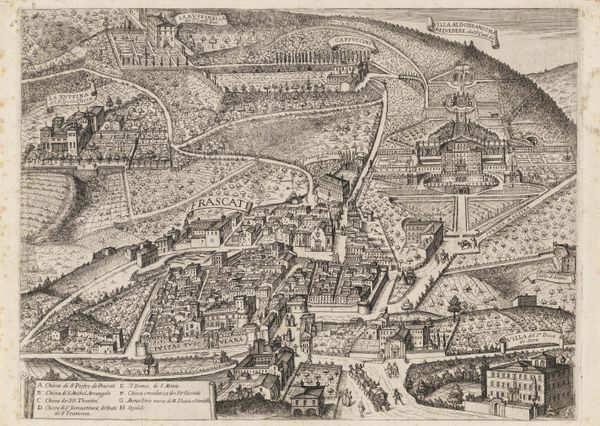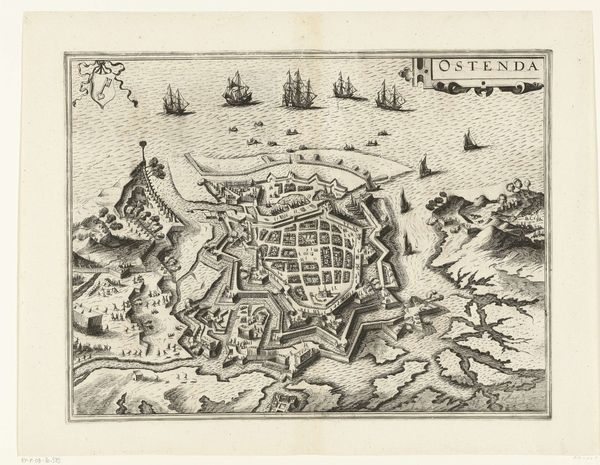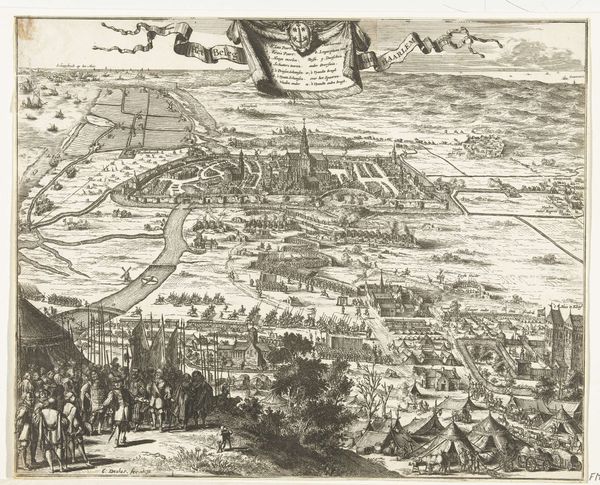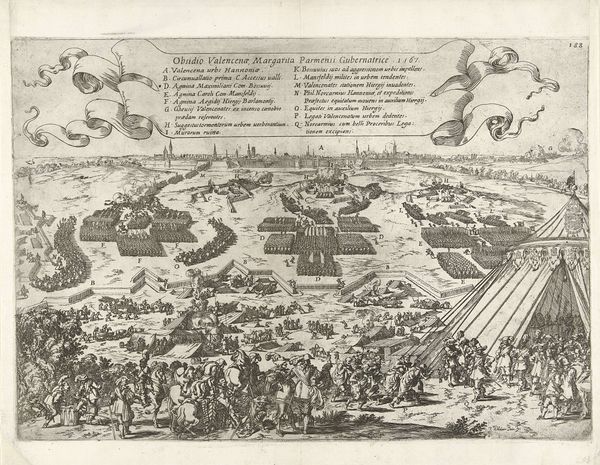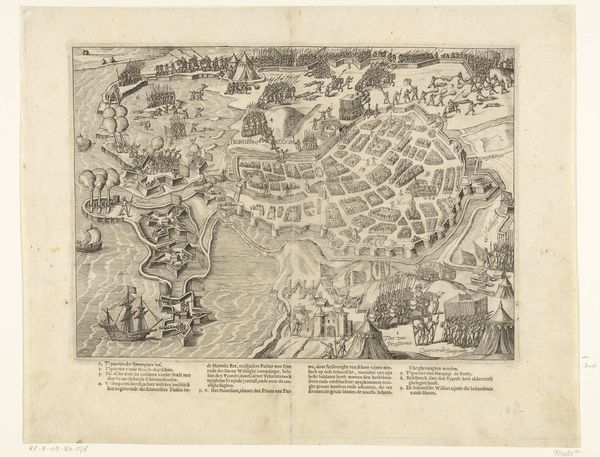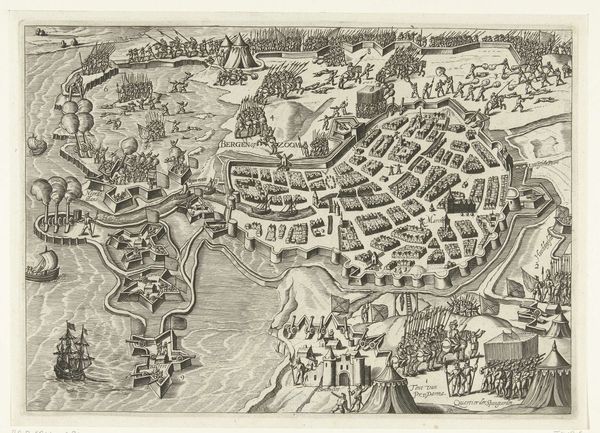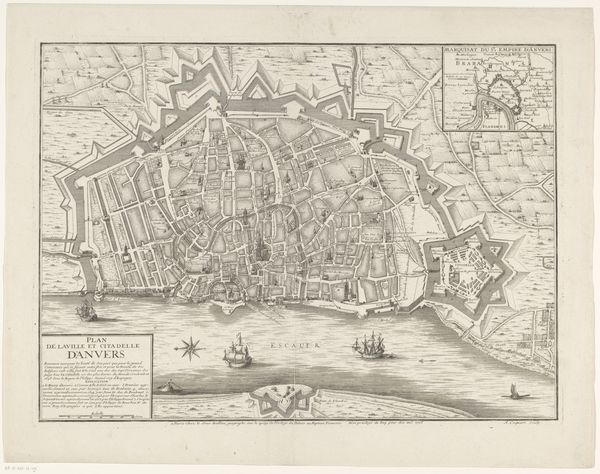
print, engraving
# print
#
perspective
#
cityscape
#
islamic-art
#
engraving
Dimensions: height 501 mm, width 582 mm
Copyright: Rijks Museum: Open Domain
Curator: This print presents us with a cartographic rendering of Istanbul, dating from the period of 1707 to 1757. It is aptly titled "Plattegrond van en gezicht op Istanbul," and it immediately impresses with its detail and composition. Editor: There’s an interesting duality here. Two distinct perspectives are offered on a single sheet. The bird’s-eye view, rendered above, seems quite distanced and impersonal, while the landscape shot closer to us at the bottom of the frame draws our attention, I think, due to the artisan quality of its engraved strokes, the medium. Curator: Yes, the visual strategies employed clearly signal different objectives. The planimetric view above meticulously catalogues urban space, delineating each district with clarity. Conversely, the landscape portrayal below attempts to capture Istanbul’s aesthetic qualities through representation. Editor: For me, the labor that produced this engraving matters so much. The fine lines and their sheer density demonstrate hours, weeks even, spent bent over the copperplate, manipulating burins and scrapers. Also the production and sourcing of this type of paper stock and how its own properties can shape an artisans methods. Curator: Certainly, one must appreciate the craft involved. The composition skillfully juxtaposes different modes of representation within the constraints of the medium, using perspective to organize an array of data. Its success derives not only from meticulous production, but its clever organisation of graphical elements. Editor: Right. Yet I keep circling back to how this sort of printed map aided not only with city navigation but also imperial projection and knowledge transfer, and to the cost of its production versus access; there must have been several different economic realities dependent on which aspect one views the artifact. Curator: These prints become very evocative artifacts when considered in those contexts. Indeed it is important not just to admire the line, balance, and the artist's representation of form, but to consider how maps are used and received as constructed images that serve broader objectives, and to examine the methods of the artist. Editor: Ultimately, it enriches the object in ways a strictly art-historical assessment cannot by contextualising the impact and the labor, in addition to design of this print to yield an overall image and perspective in my opinion.
Comments
No comments
Be the first to comment and join the conversation on the ultimate creative platform.
